They Finally Look as Good as They Sound: SVS Ultra Evolution Bookshelf Speakers
When SVS decided to update their Ultra line of speakers, they had a challenge in front of them. Their Ultra line was very well-reviewed, well-received, and popular. All of the SVS speakers (Ultra and Prime) were designed with a flat frequency response. If your speakers are already designed to play evenly throughout the frequency range, how do you improve on them? Make them more flat? The first thing that you’ll notice when you see the new Ultra Evolution series is that they look different. Very different. If I have to be honest, the big upgrade you get with the SVS Ultra Evolution speakers (even the bookshelf versions), is the aesthetics. But are there sonic upgrades as well? Let’s discuss!
SVS Ultra Evolution Bookshelf Speakers Specs
- Frequency Response: 40 Hz-40 kHz (+/-3 dB).
- Nominal impedance: 6 ohms.
- Sensitivity: 87dB (2.83V @ 1 meter full-space, 300Hz – 3kHz)
- Recommended amplifier power: 20 – 150 watts
- 1” Diamond Coated Tweeter
- 6.5” Composite Glass-Fiber Cone Woofer
- 2-way crossover with premium-grade capacitors, inductors, resistors, and heavy-trace printed circuit board
- Tweeter-to-Woofer crossover: 1.8 kHz
- Extra-thick 1” (25mm) driver baffle.
- FEA-optimized ¾” (18mm) cabinet construction.
- Dual gold-plated 5-way binding posts
- 2” wide-flared rear-firing port
- Cloth grille with magnetic retention system
- Cabinet Dimensions: 14.88” (H) x 8.66” (W) x 11.25” (D) / 378mm (H) x 220mm (W) x 285.7mm (D)
- Weight Unboxed: 18.8 pounds / 8.6 kgs
Ultra Series and Ultra Evolution Physical Comparison
My daily drivers are the original Ultra Bookshelf speakers. When I saw SVS’s press images of the Ultra Evolution Bookshelf speakers, I thought, “Man, those things look HUGE!” When the Ultra Evolution speakers arrived, I unboxed them and did a quick comparison. If you are a current owner and are worried that you’ll have to swap out your stands or placement. Rest assured. The SVS Ultra Evolution Bookshelf speakers are the same size with the tweeters at the same height as the original Ultra speakers.

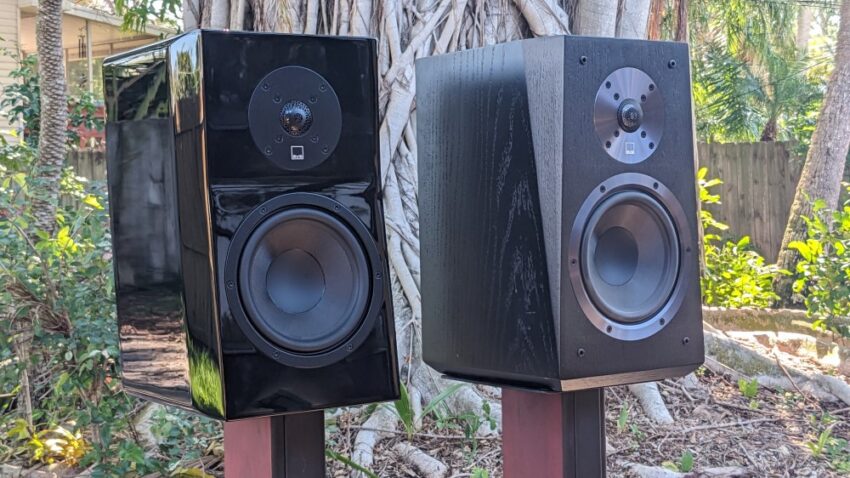
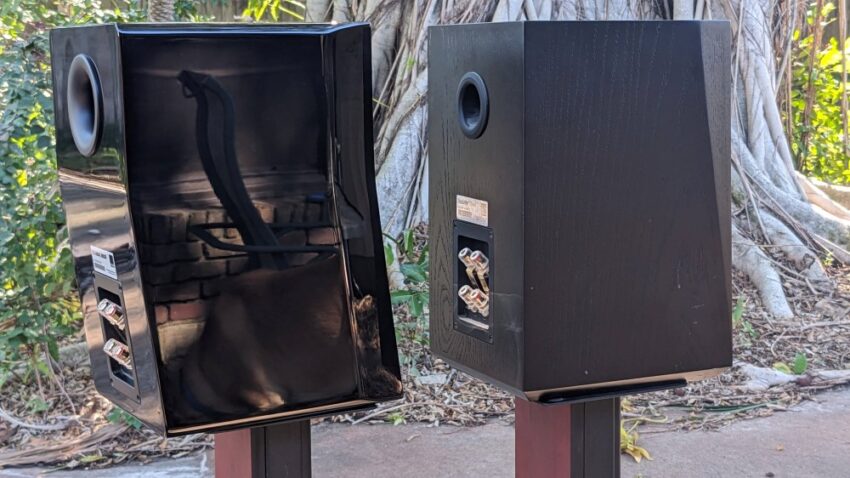

Other than the shape of the front baffle of the speakers, when you turn them around, you’ll see additional differences. The binding posts on the Evolution speakers are lower and the port is quite a bit larger. The front baffle of the Ultra series has a beveled edge that is larger at the top of the speaker. SVS has a more uniform bevel to the Ultra Evolution bookshelf speakers along with the angled front baffle. Lastly, the edges of the Evolution series are much softer. While I wouldn’t describe the Ultra series as having sharp edges, the Evolution series has edges that are more rounded.
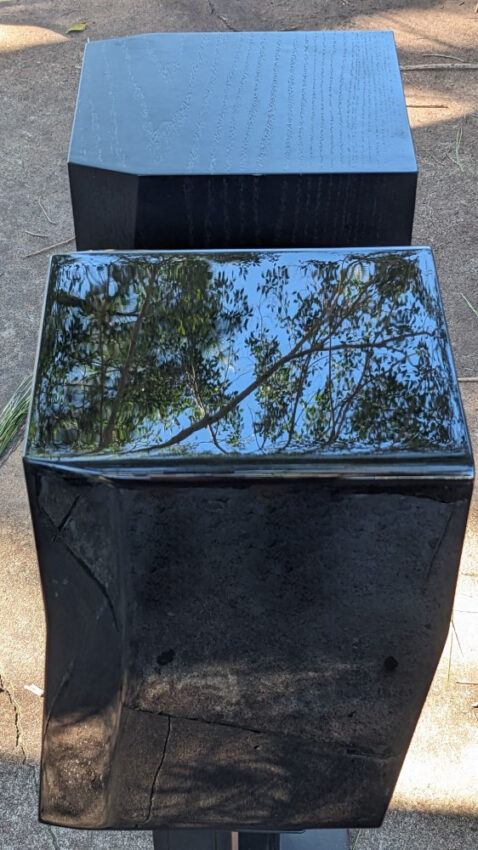
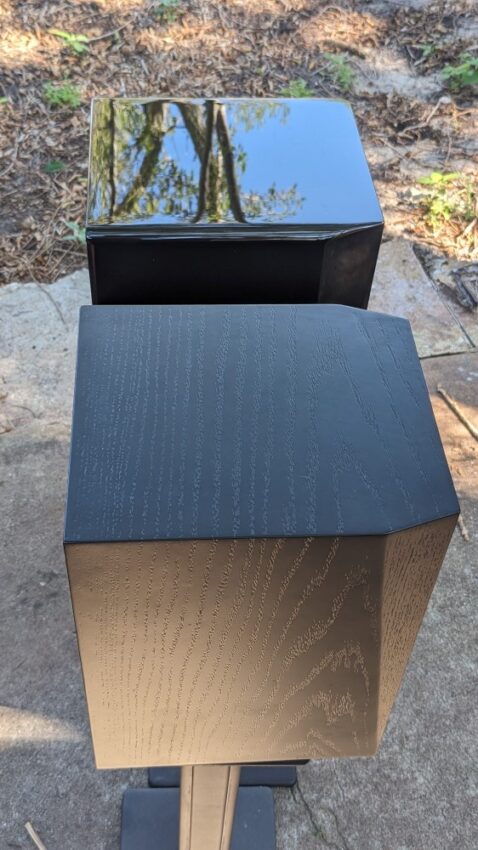
Front to back, the Evolution bookshelf speakers are almost identical to the original Ultra Bookshelf speakers. If you are thinking of upgrading, you can rest assured that you can literally drop the new Ultra Evolution bookshelf speakers into the spot of your old Ultra series speakers without a worry.
Ultra Evolution Bookshelf Grilles
The binding posts on the back seemed to be identical to the originals so there was no difference there. Of course, the main difference on the front was the grille. The original Ultra Series has the traditional friction-fit posts while the Evolution Series is held in place by magnets. I’ve dealt with a lot of magnetic grilles in the past and SVS has mostly nailed it. The magnets have a fabric covering that will dampen any potential vibrations. The grille is properly shaped for the front of the speaker and snaps into place.

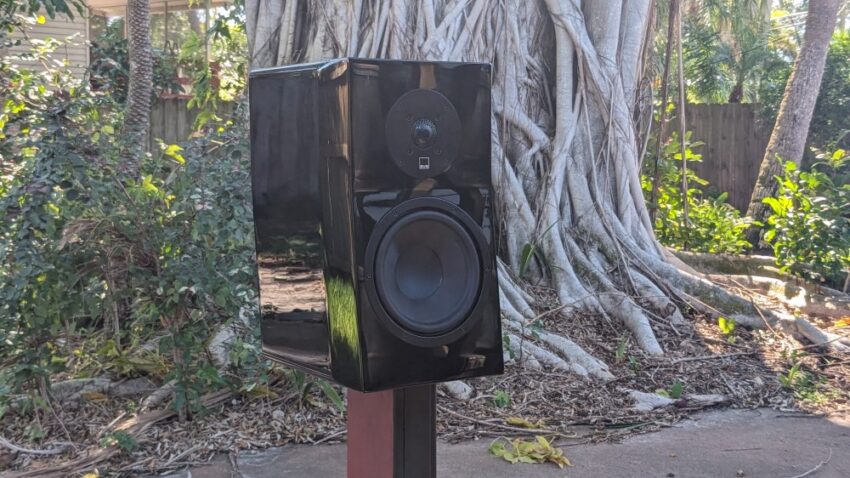


The only knock (and it is a small one) against the Evolution Series grilles is that the magnets simply grab onto the frame of the drivers. Most of the time, magnetic grilles are designed to attach to the front baffle at specific points. These points are well-defined by smaller pieces of metal embedded in the baffle. This ensures that the grille is always properly aligned. SVS having the grille of the Evolution Series bookshelf speakers attached to the driver frames means that the grille can be misaligned on the front of the speaker. As these speakers look best without the grille, this might not matter to you. If you are planning on running them with the grilles on, you’ll need to spend a few extra seconds of your life making sure the grilles are straight.
Aesthetics
If you can’t tell by my fairly terrible pictures, the SVS Ultra Evolution bookshelf speakers are gorgeous. They currently come in gloss black and gloss white with a black oak veneer on the way (according to the website). The gloss finish is impeccable and makes taking a photo of them fairly impossible without a dedicated lightbox. If you are worried about reflections on the gloss finish…you should! They reflected the image off my TV very clearly. I don’t find that too distracting, but if you do, you might want to wait for the wood veneer to be released.
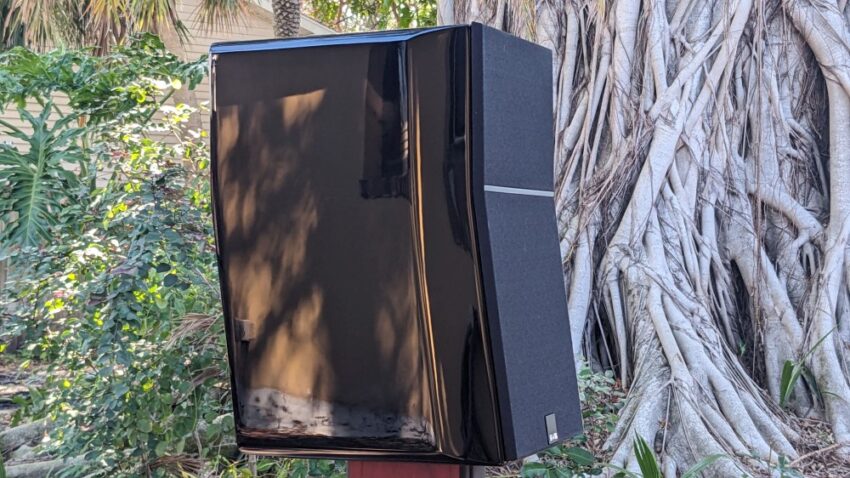
The angle of the front baffle looks fairly subtle in the pictures, but it is definitely noticeable at a distance. In my room, I could clearly see the difference in the angle from my seat. While I didn’t mind the aesthetics of the original Ultra Series, the Evolution Series is clearly a cut above. These speakers look so much better than the simple black boxes of the Ultra Series. The slight angle and unique profile just oozes high-end. While the original Ultra Series always sounded great, they didn’t really look the part. The Ultra Evolution Bookshelf speakers look as good as they sound.
The price of the Ultra Evolution Bookshelf speakers is $100 more than SVS’s previous offerings. The original Ultra Series debuted at just under $1000 a pair in the gloss finish way back in 2013-14. At $1200 a pair for the Ultra Evolution Bookshelf speakers, you aren’t paying that much of a premium for a speaker that looks considerably better than the outgoing model.
Testing Methodology
With the Evolution speakers at a nearly identical size and shape as the original Ultra Series speakers, swapping them for the other speakers was as easy as placing them on the stands. Before my listening tests, I needed to make sure I had them level-matched. The SVS Ultra Evolution Series bookshelf speakers were slightly more efficient than the original Ultra Series. This meant that as I swapped between the two pairs, I’d need to adjust the volume a dB or two.
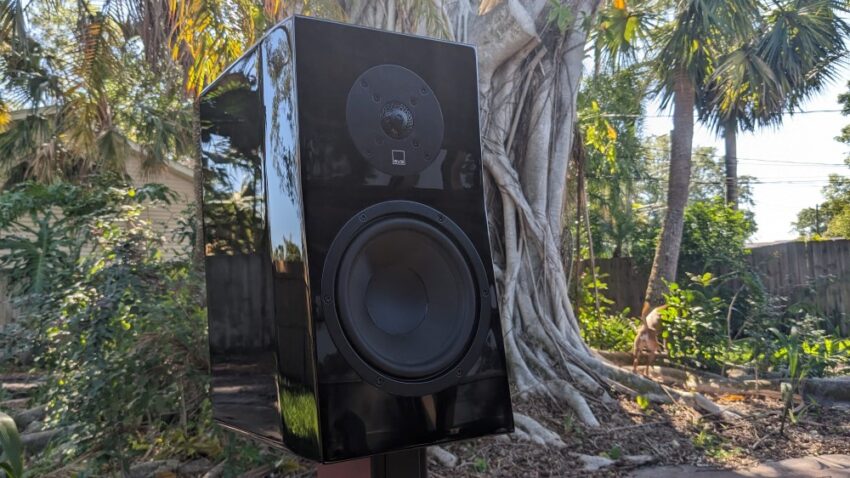
My typical modus operandi for speaker comparison is to listen to very specific parts of a handful of songs in stereo mode. Stereo mode on my Denon AV receiver is controlled separately from the rest of the speaker setup. In stereo mode, I have my dual subwoofers engaged and the speakers set to small. The crossover is set at our recommended 80Hz. My room is heavily treated with acoustic panels. Lastly, I disabled the Audyssey room correction and turned my subwoofers off.
Yes, OFF!
When you are testing speakers, it is important to remove as much bias as possible. If you are planning on crossing over a speaker into a subwoofer (or two), then any bass below that crossover region is a point of bias. You will naturally prefer the speaker that has more bass. By turning your subwoofers off, you are comparing apples to apples.
Listening Comparisons
Other than the shape of the speakers and the supposed benefits of time-aligning the drivers, SVS has designed the Ultra Evolution Series with two main differences over the original Ultra Series – output and extension. The fact that I had to adjust the volume down for the Evolution Series showed definitively that they are more efficient than the Ultra Series. Bookshelf speakers are nearly always going to be used with a subwoofer. My testing methodology ensures that any additional bass response (which will never be realized by most people anyhow) is eliminated.
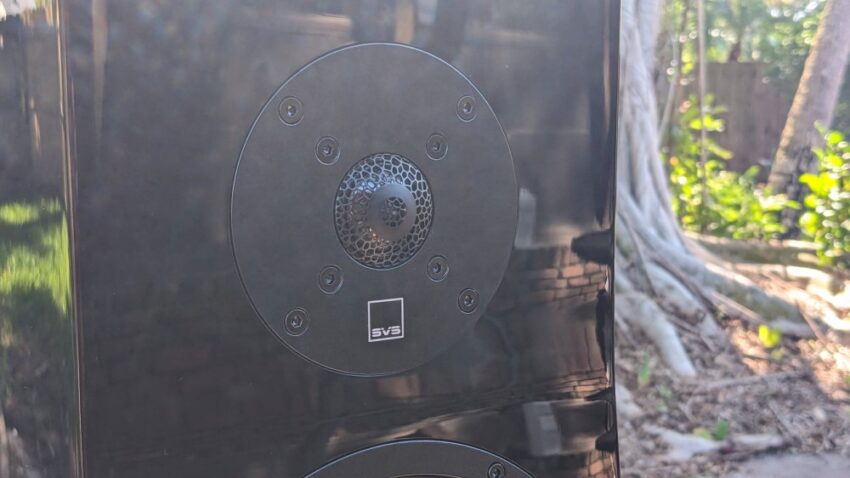
If you liked the Ultra Series, you will feel the same about the Ultra Evolution Series. It quickly became apparent as I swapped between the two sets of speakers that they sounded remarkably similar. This is to be expected. SVS has said that they want the new Evolution Series to be tonally compatible with their other speakers so that you can mix and match. If you buy the SVS Ultra Evolution Series bookshelf speakers and expect them to sound wildly different from the Ultra Series, you are going to be disappointed.
No reviewer can tell you how a speaker will sound in your room. As far as rooms go, mine is more neutral than most and is heavily treated. Any small differences I noted should be taken with a healthy dose of skepticism. The main difference I noted was that I felt the off-axis response was slightly better. The Ultra Evolution speakers seemed better at creating that phantom center image than the original Ultra Series. SVS has stated that they were going for an even flatter response with the Evolution Series. With the bookshelf speakers, they sounded as if the midrange was slightly louder than the Ultra Series. These differences were small and I’m skeptical that I could pick them out in a blind test reliably.
Conclusion

I know of many speaker companies that slap a “V2” at the end of a product name, make some dubious claims of better components, and increase the price of a speaker that looks exactly the same. SVS hasn’t done that with the Ultra Evolution Series speakers. The Ultra Evolution Series does have component improvements but also looks so much better than the original Ultra Series. Yes, they cost more. Yes, they sound very similar to the previous models. But no one will wonder if you have the original or the upgraded Ultra Series when they glance at your speakers. The SVS Ultra Evolution Series bookshelf speakers sound as good as they look. And they look phenomenal! Highly recommended.


